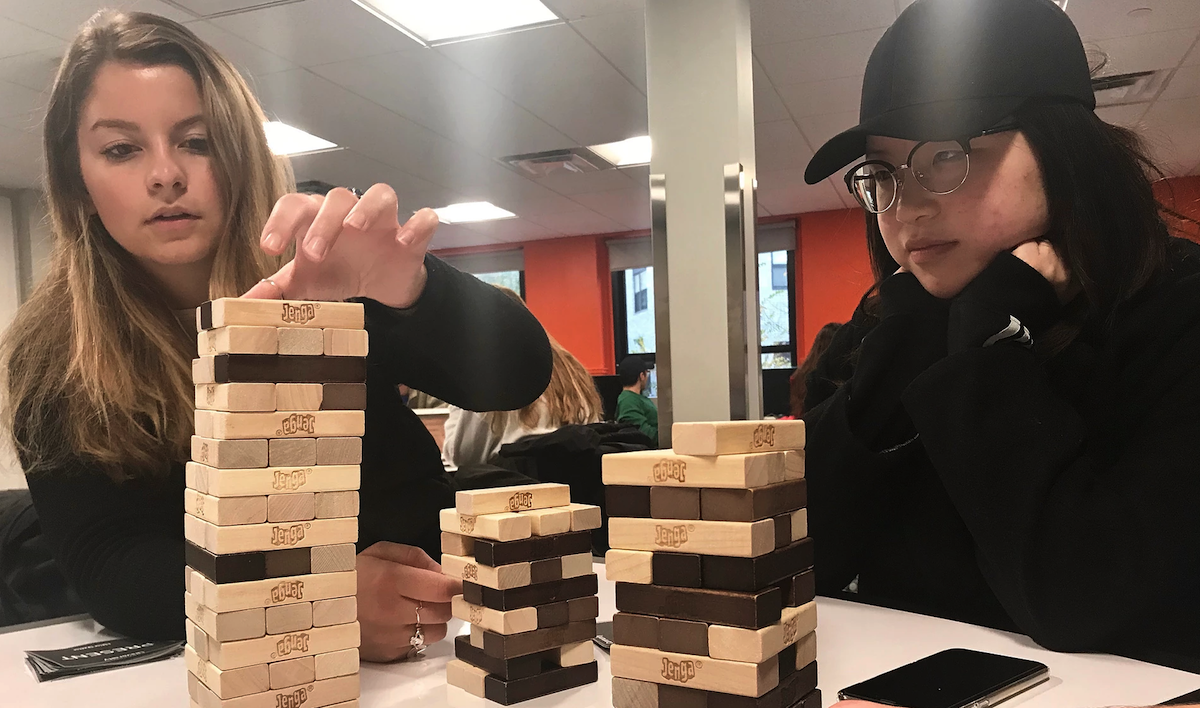How we built an immersive underground history of our university
Over the last four months, I worked with several classmates in our journalism course “Digital Storytelling and Social Media” to design a multi-platform narrative of Northeastern University’s history of development through archival, tangible and immersive storytelling. We ended up with an interactive map, a custom Jenga game and an audio tour of campus. What follows is how we did it.
We spent the first few weeks of the semester doing the heavy lifting: the research and reporting. We used both Northeastern’s and community archives to understand how the campus developed over the last few decades and how the newer, larger development projects have been received by locals. We also spoke to some local community activists to get a sense of the current opinion surrounding Northeastern’s ever-expanding campus. We found we were getting the best material digging up records of lawsuits and community protests so we leaned on those for the first project, along with quotes from the community.
We decided to aggregate the information we found on a single page, centered around a map we built using StoryMapJS and took a decidedly opinionated approach to our reporting. We decided to do this in order to reflect the local community’s feelings of frustration about Northeastern’s outward expansion and development. It also kept our material engaging. Of course, we took great care to ground our reporting in the archival research and in-person reporting we did.
Excited about our work and progress from our first project, we decided to build upon it for our tangible storytelling project. We wanted to take the narrative we had already developed and build it into a tangible experience to increase the impact it could have on our audience. We did this by creating a custom Jenga game, in which players would role-play students, Northeastern University, or community members while trying to keep upright one of three Jenga towers. We designed custom cards and win conditions to create a sense of the different roles in the urban development surrounding Northeastern. We tested the game with current and prospective Northeastern students and Northeastern faculty and found the game had a positive reception and furthered the impact of our storytelling.

At the end of the semester we decided to continue to build upon our narrative with an immersive storytelling project, which would take a tonally different approach.
We created a mock audio tour of Northeastern’s campus, rewriting our own reporting into a script with a comedic, almost subversive voice. We then had one of our team members record each blurb – paired with a building on campus – over soft elevator music. We uploaded the audio files to SoundCloud.
Next, we designed and printed out stickers with QR codes pointing to our SoundCloud links using YouScan. We then posted these stickers on and around the buildings we had reported on with the hope that students and community members might better engage with the complicated history of those structures.

Links to all of the above mentioned stories can be found here.
- How Vox’s Alvin Chang explains complex topics, from science to politics - March 12, 2019
- How we built an immersive underground history of our university - December 19, 2018





